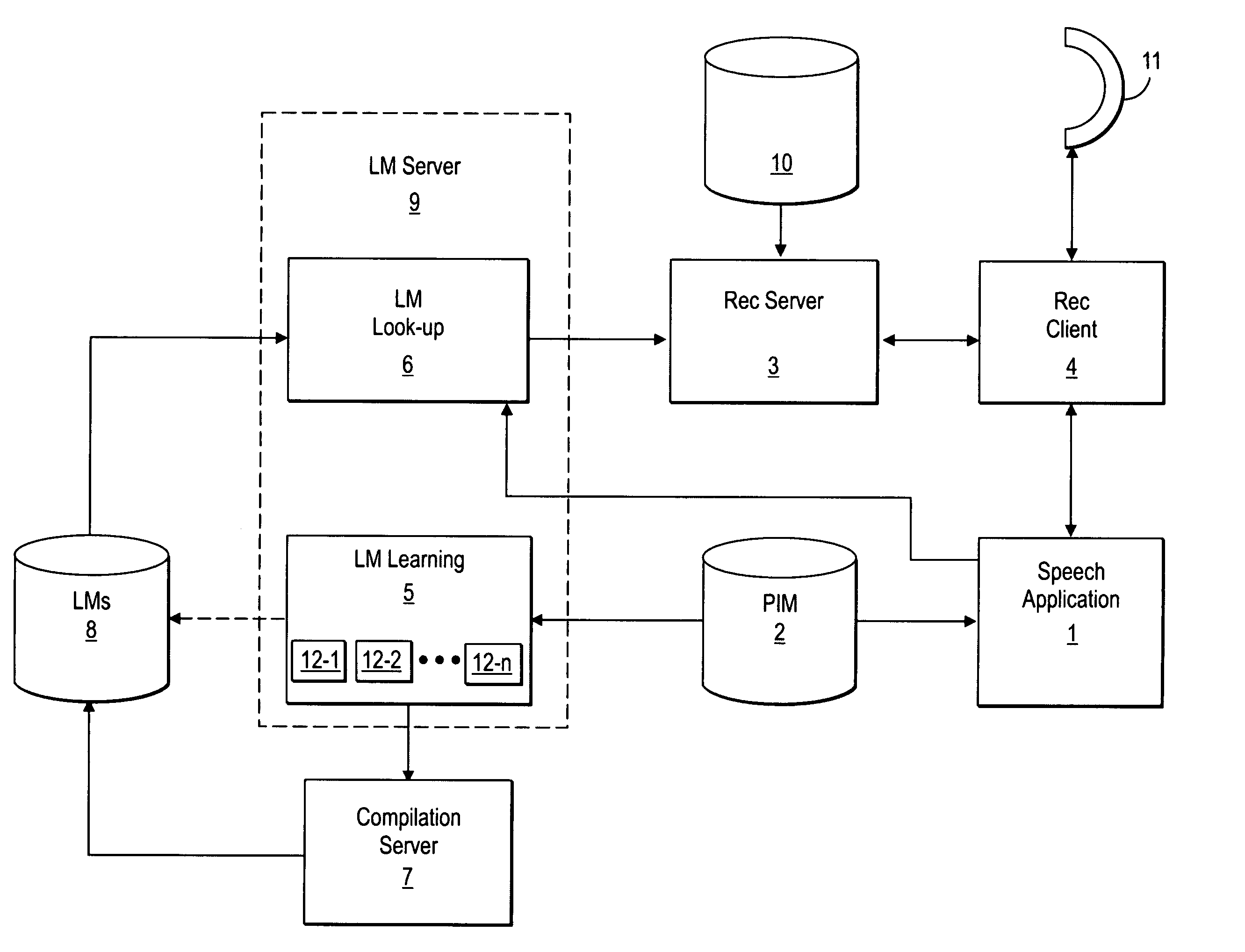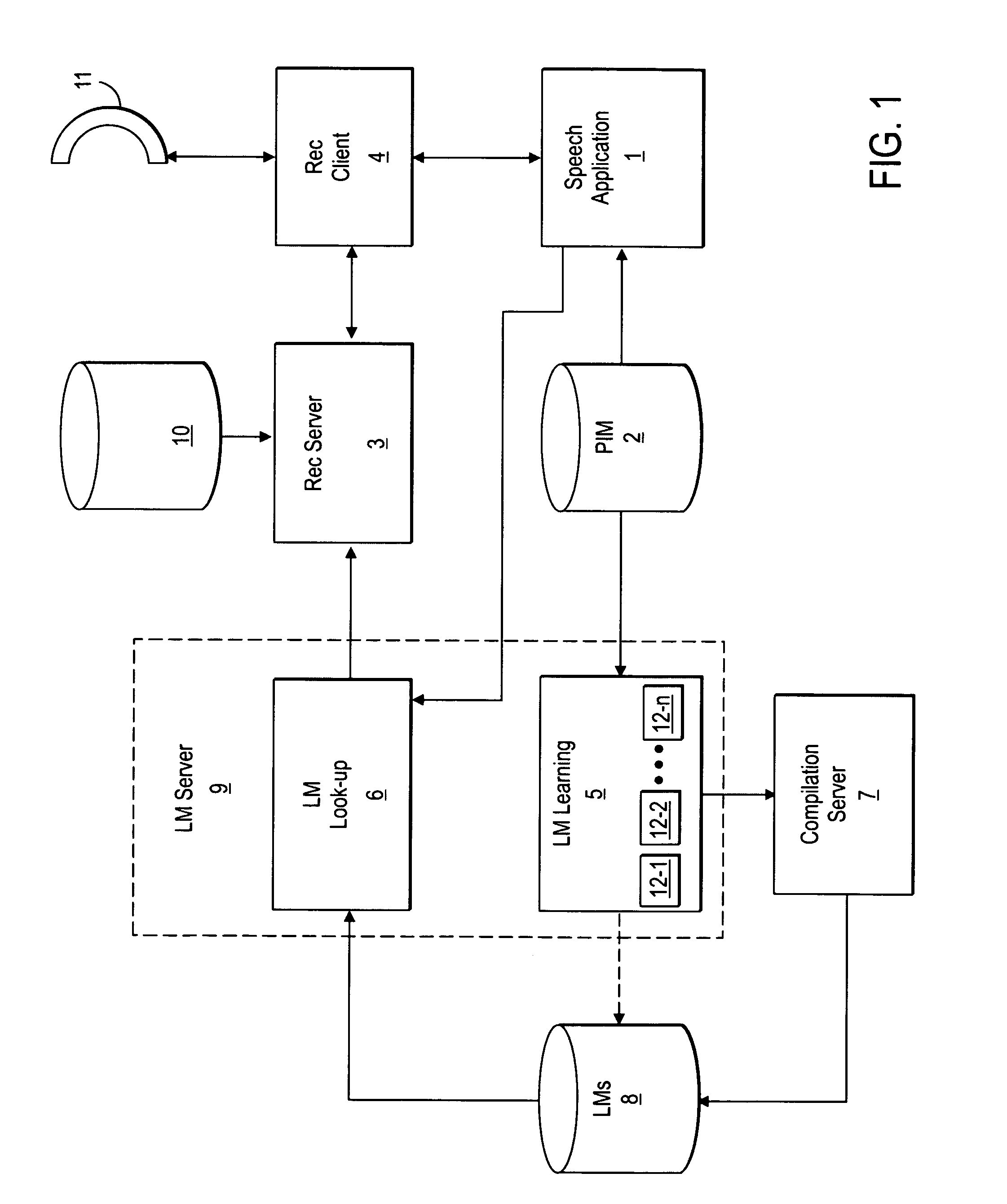Method and apparatus for improving human-machine dialogs using language models learned automatically from personalized data
a technology of personalized data and human-machine dialogue, applied in the field of automatic speech recognition, can solve the problems of poor recognition accuracy in open dialogs, difficult to predict speaker utterances, and long open dialogs
- Summary
- Abstract
- Description
- Claims
- Application Information
AI Technical Summary
Problems solved by technology
Method used
Image
Examples
Embodiment Construction
[0008]As described in greater detail below, a method and apparatus for improving dialogs between a human and a machine by using language models learned automatically from personalized data are described. Note that in this description, references to “one embodiment” or “an embodiment” mean that the feature being referred to is included in at least one embodiment of the present invention. Further, separate references to “one embodiment” in this description do not necessarily refer to the same embodiment; however, neither are such embodiments mutually exclusive, unless so stated and except as will be readily apparent to those skilled in the art. Thus, the present invention can include any variety of combinations and / or integrations of the embodiments described herein.
[0009]The technique described herein revolves around the concept of making a personal information manager (PIM) the hub of a speech application. Accordingly, as described in greater detail below, a speech-based processing ...
PUM
 Login to View More
Login to View More Abstract
Description
Claims
Application Information
 Login to View More
Login to View More - R&D
- Intellectual Property
- Life Sciences
- Materials
- Tech Scout
- Unparalleled Data Quality
- Higher Quality Content
- 60% Fewer Hallucinations
Browse by: Latest US Patents, China's latest patents, Technical Efficacy Thesaurus, Application Domain, Technology Topic, Popular Technical Reports.
© 2025 PatSnap. All rights reserved.Legal|Privacy policy|Modern Slavery Act Transparency Statement|Sitemap|About US| Contact US: help@patsnap.com


